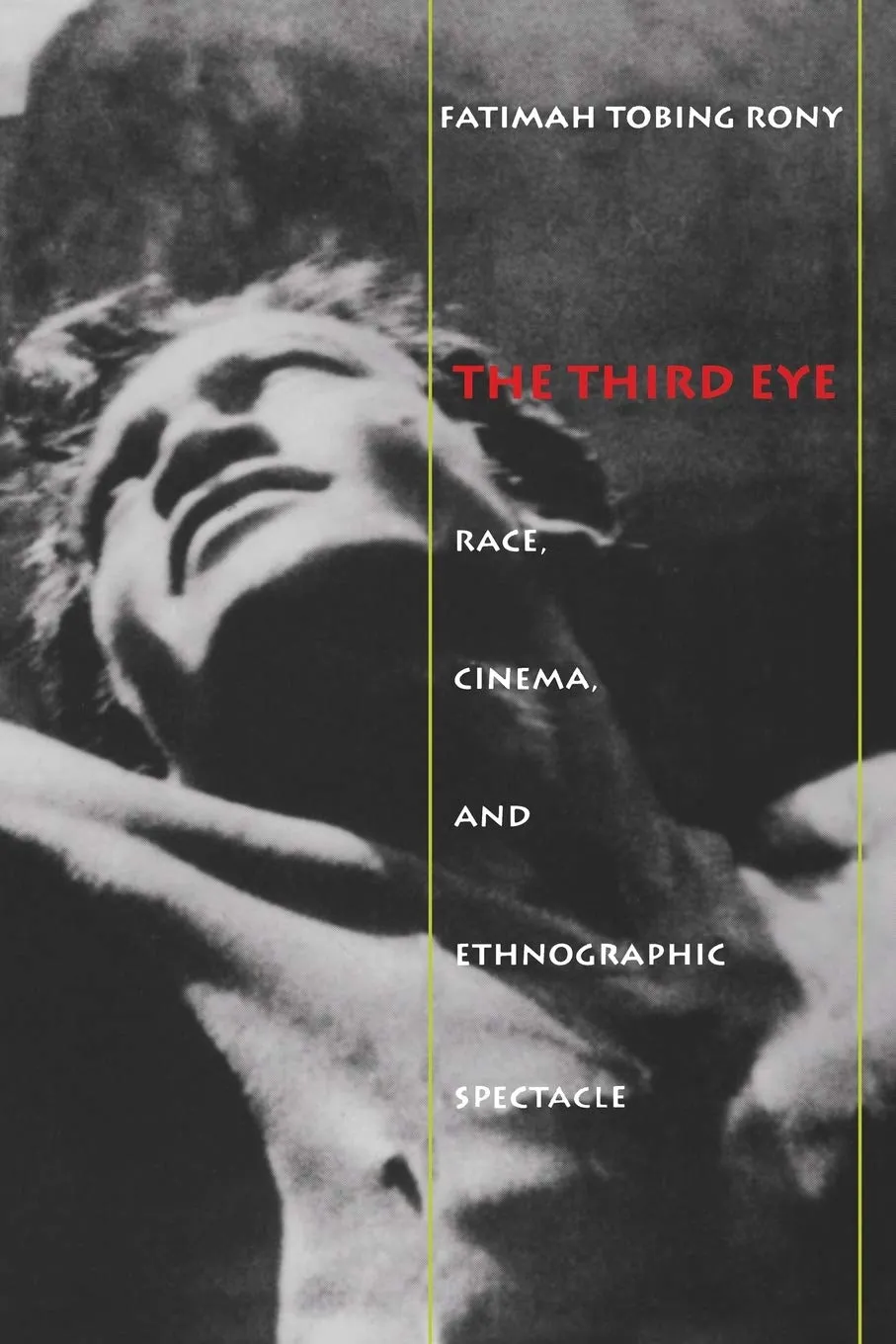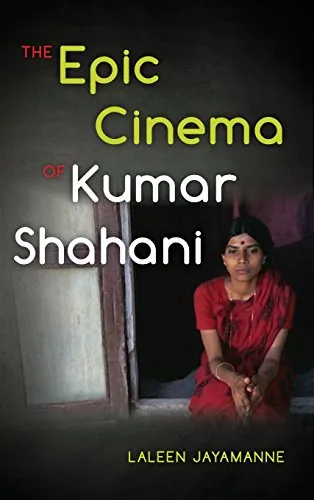The Third Eye: Race, Cinema, and Ethnographic Spectacle
4.0
بر اساس نظر کاربران

شما میتونید سوالاتتون در باره کتاب رو از هوش مصنوعیش بعد از ورود بپرسید
هر دانلود یا پرسش از هوش مصنوعی 2 امتیاز لازم دارد، برای بدست آوردن امتیاز رایگان، به صفحه ی راهنمای امتیازات سر بزنید و یک سری کار ارزشمند انجام بدینکتاب های مرتبط:
معرفی اجمالی کتاب
کتاب The Third Eye: Race, Cinema, and Ethnographic Spectacle به قلم فاطمه طوبینگ رونی، اثری است که به تحلیل ارتباط میان نژاد، سینما و نمایشهای اتنوگرافیک میپردازد. این کتاب به بررسی چگونگی تصویرسازی و نمایش فرهنگی در فیلمهای سینمایی و تأثیر آن بر بازنمایی نژادا نه و فرهنگی میپردازد.
خلاصهای مفصل از کتاب
در این کتاب، رونی به تحلیل چگونگی استفاده از سینما به عنوان ابزاری برای نمایش و نمایاندن فرهنگهای گوناگون میپردازد. او با بهرهگیری از تحلیلهای انتقادی و بررسی نمونههای مختلف فیلمهای اتنوگرافی، چگونگی استفاده از تصاویر و روایتهای سینمایی برای ساختن کلیشههای نژادی و فرهنگی را مورد بررسی قرار میدهد. نویسنده در این اثر به بررسی نقش و تأثیرات این نمایشها بر ادراک عمومی و همچنین تاثیرشان بر فرهنگ بصری مخاطبان پرداخته است.
پیامهای کلیدی
- توجه به پیچیدگیهای نمایشهای نژادی در رسانههای تصویری.
- نقدهایی بر ساخت و تولید فیلمهای اتنوگرافی و تأثیرات آنها بر گفتمانهای فرهنگی.
- درک عمقی از نقش سینما در شکلدهی به ادراکات نژادی و فرهنگی.
جملات معروف کتاب
کتاب شامل بخشهایی است که به دقت به تحلیل و نقد چگونگی بازنمایی نژادها و فرهنگها در رسانه سینما میپردازد. این جملات با برانگیختن فکر و تأمل در خواننده، عمق و پیچیدگی این موضوعات را به نمایش میگذارند.
چرا این کتاب مهم است؟
این کتاب با ارائه نگاهی جدید و انتقادی به بازنماییهای نژادی در سینما، به خوانندگان کمک میکند تا شناخت بهتری نسبت به تأثیرات سینما بر فرهنگها و نژادهای مختلف پیدا کنند. رونی با تحلیلهای دقیق و مثالهای جذاب، خوانندگان را به تأمل دربارهٔ ماهیت نژاد و فرهنگ در رسانهها و روایتهای سینمایی دعوت میکند.
The Third Eye: Race, Cinema, and Ethnographic Spectacle
In 'The Third Eye: Race, Cinema, and Ethnographic Spectacle', Fatimah Tobing Rony explores the intersections of race, cinema, and the ethnographic gaze. This critically acclaimed work delves into the way cinema has historically been used as a tool of colonial and ethnographic observation, analyzing its impact on the representation of non-Western people. With a keen focus on visual anthropology and film studies, Rony meticulously dissects the cultural implications of this visual spectacle.
Detailed Summary
The book opens with an exploration of the origins of ethnographic cinema, detailing how early filmmakers used the medium to document and represent cultures perceived as "other." Through the concept of the 'third eye,' Rony conceptualizes the camera as both an instrument of observation and power, often wielded by Western filmmakers with an imperial gaze.
Rony further examines key films and filmmakers that have shaped the discourse on race and representation in cinema. She addresses the problematic aspects of these works, particularly their tendency to exoticize and dehumanize subjects. Through a critical analysis of films like Robert Flaherty's 'Nanook of the North' and others, she unpacks the narratives constructed by filmmakers who often held a position of colonial authority.
The book extends its analysis to contemporary practices and the potential for reimagining the ethnographic film as a tool for empowerment rather than exploitation. Rony encourages a shift in perspective, advocating for greater involvement of those who have been historically marginalized in the filmmaking process.
Key Takeaways
- The concept of the 'third eye' symbolizes the powerful role of the camera in shaping perceptions of race and culture.
- Ethnographic cinema has historically functioned as a means of reinforcing colonial narratives and hierarchies.
- There is a pressing need for more inclusive practices in filmmaking that prioritize the voices and perspectives of underrepresented communities.
- Critical engagement with visual media is essential in understanding its influence on racial and cultural dynamics.
Famous Quotes from the Book
"The camera, in its all-seeing capacity, becomes an extension of the imperial gaze, documenting, categorizing, and often subjugating its subjects."
"To reclaim the image is to reclaim one's narrative, one's identity."
Why This Book Matters
'The Third Eye' is a seminal work in the fields of film studies and postcolonial theory, offering a nuanced critique of the power dynamics inherent in visual media. It challenges readers to reconsider the histories and contexts of the films they consume, highlighting the importance of diverse voices in shaping media narratives. Rony's book is essential for anyone interested in the ethics of representation and the potential for film to be both a tool of oppression and a medium for change.
By weaving together theory and analysis in a compelling narrative, 'The Third Eye' serves as both a scholarly resource and a call to action for filmmakers, academics, and audiences alike. Its insights continue to resonate in discussions about race, representation, and the responsibilities of media creators today.
دانلود رایگان مستقیم
شما میتونید سوالاتتون در باره کتاب رو از هوش مصنوعیش بعد از ورود بپرسید
دسترسی به کتابها از طریق پلتفرمهای قانونی و کتابخانههای عمومی نه تنها از حقوق نویسندگان و ناشران حمایت میکند، بلکه به پایداری فرهنگ کتابخوانی نیز کمک میرساند. پیش از دانلود، لحظهای به بررسی این گزینهها فکر کنید.
این کتاب رو در پلتفرم های دیگه ببینید
WorldCat به شما کمک میکنه تا کتاب ها رو در کتابخانه های سراسر دنیا پیدا کنید
امتیازها، نظرات تخصصی و صحبت ها درباره کتاب را در Goodreads ببینید
کتابهای کمیاب یا دست دوم را در AbeBooks پیدا کنید و بخرید
1253
بازدید4.0
امتیاز50
نظر98%
رضایتنظرات:
4.0
بر اساس 0 نظر کاربران
"کیفیت چاپ عالی بود، خیلی راضیام"
Questions & Answers
Ask questions about this book or help others by answering
No questions yet. Be the first to ask!



